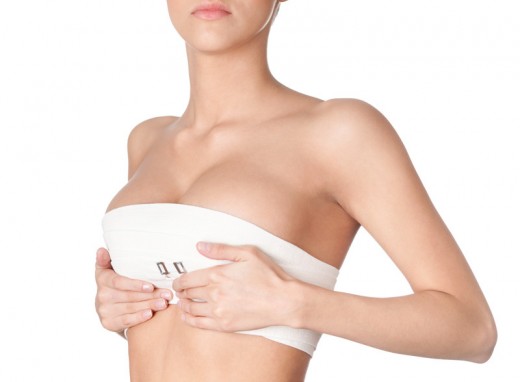Is Non-implant Breast Augmentation A Better Choice For Women?

Breast augmentation aims to enhance the size, shape and general appearance of the breasts through cosmetic surgery. The most common means of producing this effect is through breast implants, usually filled with silicone gel.
There is another option available, however, and that is enhancing the breasts using body fat taken from the patient. This is called “non-implant breast augmentation” or “fat transfer breast augmentation.” It uses the same technology as liposuction to remove fat from the patient’s body, but re-injects it into the patient’s breasts using a lipo-injector gun.
The fat is taken from other areas of the body, such as the posterior or the legs, and this procedure is favored by women who want to kill two birds with one stone. Not only do they get a more natural looking breast enhancement, but they also contour other areas of the body which they may not be satisfied with.
Another advantage of using fat transfer augmentation is that it does not introduce a foreign object into the body. This means that there is no risk of capsular contracture, which is what happens when a layer of collagen forms around a breast implant. It removes the risk of an implant rupturing or leaking, although recent developments in the manufacture of implants have considerably lowered the risk of that happening.
If fat transfer augmentation is used, there is also no risk of shifting or rippling, when an implant becomes displaced. All in all, this is a good procedure for women who want more subtle enhancements for their breasts, as well as a more natural approach to breast augmentation. More and more doctors are considering it as the safer alternative in cases where an implant may not be needed, such as repairs for breast defects or in reconstructive breast augmentation for women who have had a lumpectomy.
Since all of these risks of implants can be avoided through fat transfer breast augmentation, you may be wondering why don’t all women undergo fat transfer augmentation instead of having implants placed? There are several reasons, and one of them is that some women simply don’t have enough fat to transfer. Another reason is the potential results of the operation.

If a woman wants her breasts to increase by several cup sizes, fat transfer breast augmentation cannot produce that result. A breast implant is needed in order to increase the breast by that much. Also, fat transfer breast augmentation does not produce permanent results. Since the fat that is injected into the breasts is taken from the body itself, this fat can be absorbed by the body, and it can be affected by exercise, dieting, and any other factor that affects body fat.
Even if the patient does not do any activities to lessen her body fat, the fat injected into the breasts will still be naturally absorbed over time, and another injection will be needed to maintain the appearance and size of the breasts. Some clinics are able to freeze and preserve the body fat of the patient in storage, so that she does not have to undergo liposuction again, at least until the stored fat is sufficient for her injections.
This would be ideal for a woman who wants to undergo fat transfer breast augmentation, since another disadvantage is that the procedure carries with it all the risks of the liposuction that is necessary to harvest the fat needed to inject into the breasts.
Other risks of fat transfer augmentation include fat necrosis. This happens since not all the fat cells that are re-injected into the body survive. This is expected, but if a large number of these cells die, it can cause medical complications. Another downside is that the injections can cause lumpiness of the breasts, and there are instances when these lumps may become calcified. There is even evidence that these calcified lumps may become cysts. So although the procedure avoids the risks of breast augmentation using implants, fat transfer breast augmentation has several risks of its own.
An important thing to remember is that there is no procedure for breast augmentation that is entirely risk free. The best thing is always consult with a surgeon in order to determine what kind of operation is the best for you, considering the results you want, as well as your own medical background.
- Breast Augmentation and Breast Implants - Surgical ...
A popular plastic surgery choice, breast augmentation offers enhanced breast size to females of all types. This article discusses the pros and cons of various implant options and surgical techniques. - Breast Augmentation - Do Breast Implants Cause Stret...
Everything you could need to know on stretch marks after breast implant surgery and how to prevent them - Breast Augmentation Financing Information
One of the things that millions of women think about is their breast size. Every year thousands of women consider breast augmentation. Some may find their breasts too big or too small so they consider the augmentation. The biggest problem that most..






